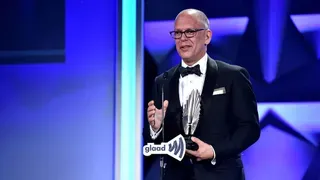August 27, 2012
Home Building Applications Rise to Highest Point Since 2008
Mark Thompson READ TIME: 3 MIN.
WASHINGTON (AP) - U.S. builders broke ground on slightly fewer homes in July than June. But in a hopeful sign for future construction, applications for building permits rose to their highest level since August 2008.
The Commerce Department said Thursday that single-family homes and apartments started in July dipped 1.1 percent to a seasonally adjusted annual rate of 746,000. That's down from June's rate of 754,000, the fastest since October 2008.
The weakness in July came from a 6.5 percent drop in the building of single-family homes, which represent about 70 percent of the market. They fell to an annual rate of 502,000, down from a two-year high reached in June. By contrast, construction of apartments rose 12.4 percent to an annual rate of 244,000 units.
But applications for building permits rose 6.8 percent to a seasonally adjusted annual rate of 812,000.
"Given the strong increase in permits, the likelihood is that builders will be digging a lot more homes in the months to come," said Joel Naroff, chief economist at Naroff Economic Advisors. He said that developers are only taking out permits "if they expect to put a shovel into the ground in the immediate future."
For July, total home construction rose in the Midwest but fell in all other parts of the country.
Even with the gains made this year, the rate of construction and the level of permits remain only about half the 1.5 million annual rate considered healthy.
Economists cautioned that housing is still a long way from where it should be.
"The housing market is getting better, but it is taking a long time," said Patrick Newport, an economist at IHS Global Insight. He said that he was forecasting housing starts would be 761,000 for all of 2012. That would be a 25 percent increase from 2011.
The housing boom drove construction to record levels in the middle of last decade, peaking in January 2006 at a rate of nearly 2.3 million. But the bubble burst in late 2006 and 2007, and construction ceased in most parts of the country. Starts plunged to just 478,000 homes in April 2009, the low point during the housing bust.
Building increased in early 2010 as temporary government tax credits for home buyers lifted sales, then fizzled when the support ended. Construction picked up again last fall, coinciding with growing optimism among builders, and it has been rising gradually since.
Homebuilder confidence grew this month to a five-year high, according to the National Association of Home Builders/Wells Fargo sentiment index. The index rose to 37 from 35 in July. And many builders reported seeing their best sales since February 2007.
Still, any reading below 50 indicates negative sentiment about the housing market. The index hasn't been in positive territory since April 2006, the peak of the housing boom.
Homebuilders have enjoyed improved sales trends this year, aided by record-low mortgage rates and a decline in the inventory of unsold homes.
Still, the nascent housing recovery has been subject to fits and starts. Sales of new homes fell 8.4 percent in June to a seasonally adjusted annual rate of 350,000 - the biggest decline since February 2011. That was down from a two-year high of 382,000 in May.
Most economists say a healthy market has annual sales of new homes closer to 700,000. And the home sales could stumble further if economic growth and employment stay weak.
Employers added 163,000 jobs in July, a hopeful indication that hiring could pick up after three weak months of job creation. The economy created an average of just 73,000 jobs a month from April through June.
While newly constructed homes represent less than 20 percent of the housing sales market, they have an outsize impact on the economy. Each home built creates an average of three jobs for a year and generates about $90,000 in tax revenue, according to data from the builders' association.
A long-term New Yorker and a member of New York Travel Writers Association, Mark Thompson has also lived in San Francisco, Boston, Provincetown, D.C., Miami Beach and the south of France. The author of the novels WOLFCHILD and MY HAWAIIAN PENTHOUSE, he has a PhD in American Studies and is the recipient of fellowships at MacDowell, Yaddo, and Blue Mountain Center. His work has appeared in numerous publications.




